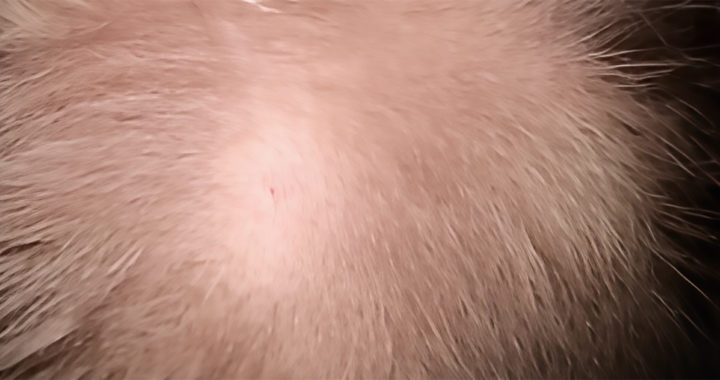Minoxidil and finasteride are popular medications used to treat a particular type of hair loss called androgenetic alopecia. These two have notable differences in terms of how they work in halting hair fall and promoting hair growth. This article provides a side-by-side comparison of their respective mechanism of action, use and accessibility, and effectiveness.
A Comparison of the Effectiveness of Minoxidil and Finasteride in Treating Hair Loss and Promoting Hair Growth
It is interesting to underscore the fact that minoxidil and finasteride are the two main drugs approved by the Federal Drug Administration of the United States for treating androgenetic alopecia. Some individuals are responsive to either one while others have used these two to maximize their hair growth potential. The following are the main comparison points to evaluate which between minoxidil and finasteride is more effective:
Mechanism of Action
One of the main differences between minoxidil and finasteride is their mechanism of action. Minoxidil is a vasodilator that is also prescribed to patients with high blood pressure. Its effectiveness in treating hair loss centers on its effect in increasing the blood flow to the scalp to deliver more nutrients and oxygen to the hair follicles.
Finasteride is a drug initially used to treat men with benign prostatic hyperplasia or prostate enlargement. Its use in hair loss treatment stems from the fact that it is a 5-alpha-reductase inhibitor that blocks the production of dihydrotestosterone or DHT from testosterone. High DHT levels have been linked to androgenic alopecia in men.
Availability and Administration
Both medications are available in most pharmacies. However, between the two, minoxidil is the most available. Its topical form can be purchased over the counter or even online without a prescription. Finasteride requires a prescription. It is also worth noting that oral minoxidil also requires a prescription from a physician.
The wide availability of minoxidil means that it is more affordable at face value than finasteride. A 30ml bottle with a 5 percent solution would cost less than USD 10.00 and it would last up to a month. A one-month supply of finasteride would cost between USD 20.0 to USD 60.00. Minoxidil can be more expensive if it requires a more frequent application.
Minoxidil is applied topically most of the time. It is available at 2 percent or 5 percent solution applied up to twice a day. Some individuals use an oral form when they are unresponsive to the topical form. Finasteride is taken via the oral route. It is available in a 1-milligram dose and is taken once a day. Both can be used without medical supervision.
Effectiveness and Long-Term Benefits
Several studies have explored and provided evidence regarding the effectiveness of minoxidil and finasteride. Both are effective in treating androgenetic alopecia. Nevertheless, because of these science-backed effects, some studies have also investigated and compared which of the two is more effective.
Finasteride appears to be more effective in certain cases. A comparative study by E. Arca et al. involving men with androgenetic alopecia or male pattern hair loss concluded that the clinical cure rates were 80 percent for the oral finasteride group and 52 percent for the topical minoxidil group. It concluded that finasteride was more effective than minoxidil.
The two have notable limitations. Both address androgenetic alopecia. It cannot treat other types or causes of hair loss. Finasteride also has limited effects among women with androgenetic alopecia or female pattern hair loss. These women have a better response to topical minoxidil and other DHT blockers or antiandrogen medications.
Nevertheless, considering their long-term benefits, more studies need to be done. Some studies noted that the effectiveness of minoxidil in preventing hair loss and promoting hair growth plateaus at 7 to 10 years while the effectiveness of finasteride is more long-term with some studies documenting effectiveness after 5 years and beyond 10 years.
Safety and Known Side Effects
An interesting similarity between minoxidil and finasteride is their safety. Most studies have concluded that these two are generally safe for long-term use among teenage and adult men. The two can also be used together without negative effects. More studies need to be done to assess safety among younger individuals and the elderly.
It is still important to note that another difference between minoxidil and finasteride is their side effects. Topical minoxidil has some disadvantages including scalp itching and irritation which can exacerbate hair loss and lead to scarring alopecia. Finasteride has been linked to decrease libido in men, erectile dysfunction, and testicular antrophy.
FURTHER READINGS AND REFERENCES
- Arca, E., Açıkgöz, G., Taştan, H. B., Köse, O., and Kurumlu, Z. 2004. “An Open, Randomized, Comparative Study of Oral Finasteride and 5% Topical Minoxidil in Male Androgenetic Alopecia.” Dermatology. 209(2): 117-125. DOI: 1159/000079595
- Gupta, A. K. and Charrette, A. 2015. “Topical Minoxidil: Systematic Review and Meta-Analysis of its Efficacy in Androgenetic Alopecia.” Skinmed. 13(3): 185-189. PMID: 26380504
- Lucky, A. W., Piacquadio, D. J., Ditre, C. M., Dunlap, F., Kantor, I., Pandya, A. G., Savin, R. C., and Tharp, M. D. (2004). “A Randomized, Placebo-Controlled Trial of 5% and 2% Topical Minoxidil Solutions in the Treatment of Female Pattern Hair Loss. Journal of the American Academy of Dermatology. 30(4): 541-533. DOI: 1016/j.jaad.2003.06.014
- Shapiro, J. and Kaufman, K. D. 2003. “Use of Finasteride in the Treatment of Men With Androgenetic Alopecia (Male Pattern Hair Loss).” Journal of Investigative Dermatology Symposium Proceedings. 8(1): 20-23. DOI: 1046/j.1523-1747.2003.12167.x





